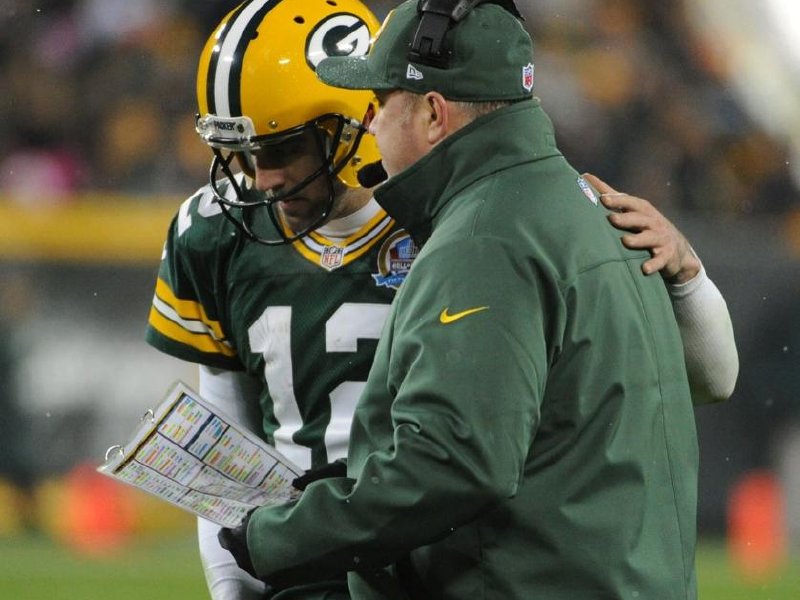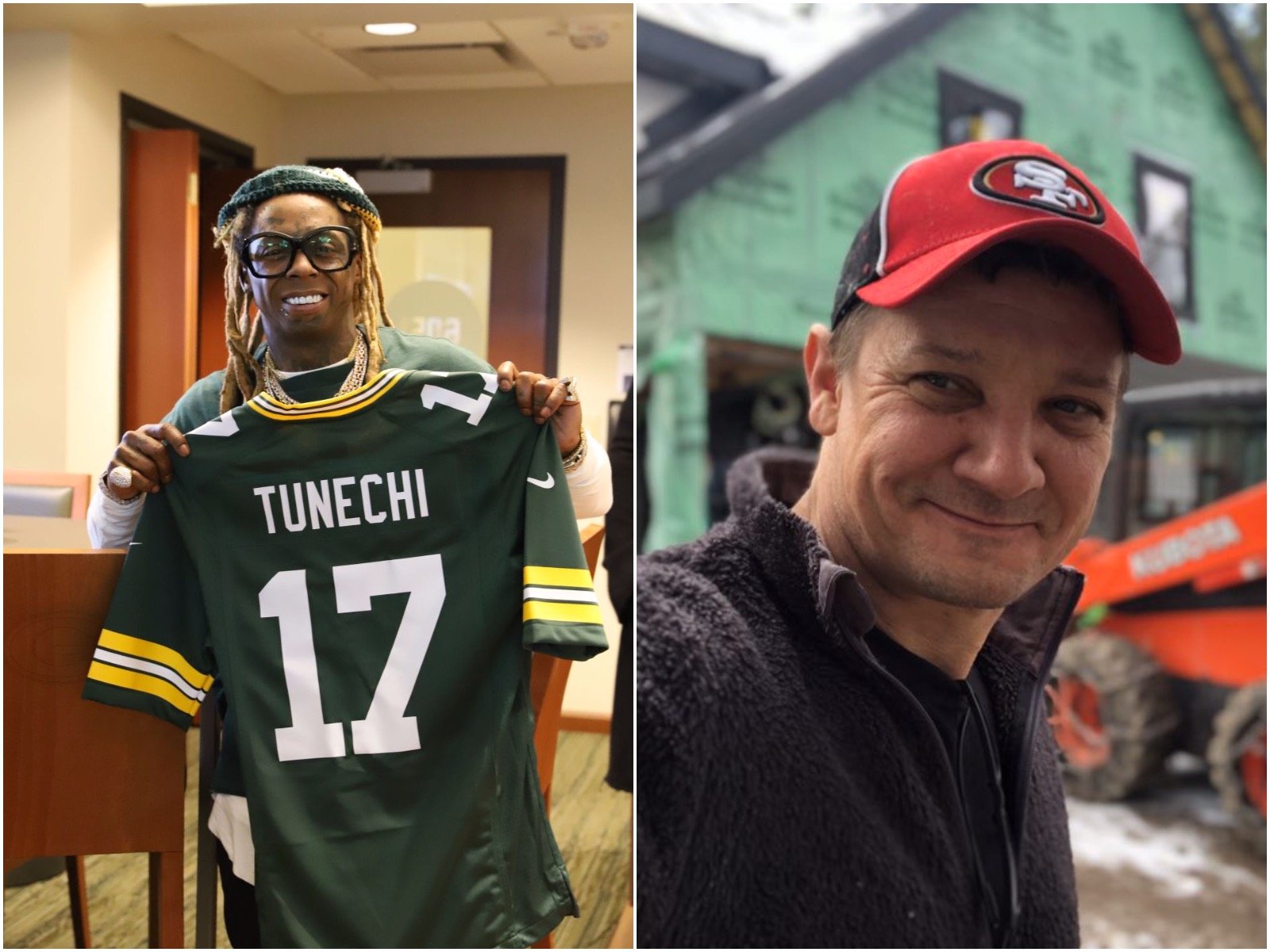Eight weeks ago, the Green Bay Packers entered their bye week 6-3 and coming off four consecutive victories.
The break came at an opportune time as the team was decimated by injury, and it allowed for players to get some much needed rest and rehabilitation. But there was another key element to the week – the time to sit back and self-evaluate.
This was perhaps most important for the offense, a unit that saw running backs, receivers, tight ends and offensive lineman shuffled in and out of the game plan due to injury. It also helped in preparing for the stretch run – breaking the tendencies that developed through the first nine games.
"I think the great thing about our staff is that really over the bye week they do so much self-scout," Packers quarterback Aaron Rodgers said. "We're very conscious of the times we line up in certain formations, the splits, the amount of route concepts we run out of a certain formation, a certain guy being the No. 1 and the No. 2 in the progression, mixing it up."
After the bye, the Packers were 5-1 and riding another four-game winning streak before last week's season finale against the Minnesota Vikings. The game was important – a victory would give the Packers another bye week before hosting a playoff game at Lambeau Field.
With receiver Greg Jennings back in the mix and the entire pass catching corps ready to go, a week off would allow for another round of self-examination.
Adrian Peterson and the Vikings ruined that with a last second 37-34 victory, which put the Packers in perhaps the worst situation possible – playing the same opponent six days later and for the third time in less than a month.
To combat this familiarity, the Packers will rely on the variety built into passing game's route tree developed and run by head coach Mike McCarthy.
"It's important (being able to disguise routes)," Rodgers said. "Our receivers can play both outside and inside so just mixing up the faces on it. That's really important to our success on offense. We like to run our stuff but we have to change the face on that in order to not be too obvious at times."
Such deception became important to McCarthy in 2010 when tight end Jermichael Finley injured his right knee in early October. The athletic pass catcher had become the focal point of the Packers offense, having caught 21 passes for 301 yards and a touchdown. After his injury, it took time for the offense to find a rhythm.
"We've gone away from just going into games or offseason's saying 'Hey we need to highlight this one player,'" McCarthy said. "Our quarterback throws to the open player. We run concepts."
You can see the concepts on nearly every Packers drive where receivers line up in different spots in the formation.
"Some plays they tag us with different stuff and tell you what you've got but most of the time it's concepts, so once you hear a certain play you know the whole concept," Jones said. "If it's Strong Right, 323 Colt, everybody knows the concept of Colt and everybody knows what they have and know what they gotta do."
Tight end D.J. Williams takes it a step further.
"Since you know the concept, you also know what the other receivers around you are doing as well," he said. "And once you know that, and then you can figure out the coverage of the defense, you can be like 'the ball is most likely coming to me on this play.' It puts you ahead of the game a little bit and puts you on the same page as the quarterback on when you need to snap your head and eyes around to get ready for the ball. It goes into more depth in that kind of way."
Because of this, the Packers receivers are interchangeable and the offense has been better able to withstand injuries that has forced Randall Cobb, Nelson and Jennings to miss games and slowed down several others. Seventeen different players have caught a pass and five players have at least 30 catches.
"We move our players around," McCarthy said. "That's the beauty of our receiver group that I've talked about time and time again. They give us great flexibility in game planning as far as taking away tendencies of who's in the slot, who's in the 1 spot and so forth. The route trees are diverse - one guy doesn't just run just three routes and one guy doesn't just line up in the number two position. And, that won't change."
Such diversity becomes especially important as the Packers enter the playoffs. The Vikings are intimately familiar with the team's personnel and offense. And should Green Bay win Saturday night, it will travel to San Francisco for a rematch of Week 1.
"It helps in disguising," Williams said. "After doing it for weeks into the season, after a while people start figuring out what you've got going on but if you've got different people out there in different places it helps you disguise a little bit more. I think we've done a good job of that."
A key component to that deception is that every receiver must sell his route as if he is the primary read – even though his pattern may be designed to free up a teammate.
"Every route we run is to get open, even though we know that that combination route is to get the next guy open," veteran receiver Donald Driver said. "Say the tight end has the out route, the Z receiver or the flanker has a go route, he's basically clearing it out for the guy underneath to get the out. But if that guy gets held up or jammed up or the guy covers it really well, then most likely – if you beat your guy one-on-one - then you're the next read. It kind of goes one, two, three. That's how our system goes. That's how you have to look at it. Every time we're running a route, we're running to win."
That's especially the case with a quarterback like Rodgers, an accurate passer and quick decision maker who understands what each receiver is doing and where he'll be at any given point in the route.
"You can't go to sleep, not with 'ARod' at quarterback," Williams laughed. "It could come at you any play. That's another thing about this offense. You never know where the ball is going to go and it's hard for a defense to cover. When you've got at least maybe three to four options on each play where the ball is going to go, everybody has to play every play."
The effort put forth by all the receivers in the route tree is important to the success of every individual play. If one part of the tree is weak, the easier it is for the entire structure to fall apart.
"It all works hand in hand," Williams said. "It doesn't come down to just one person doing their job, everyone needs to do it for the benefit of the team."
Jim Owczarski is an award-winning sports journalist and comes to Milwaukee by way of the Chicago Sun-Times Media Network.
A three-year Wisconsin resident who has considered Milwaukee a second home for the better part of seven years, he brings to the market experience covering nearly all major and college sports.
To this point in his career, he has been awarded six national Associated Press Sports Editors awards for investigative reporting, feature writing, breaking news and projects. He is also a four-time nominee for the prestigious Peter J. Lisagor Awards for Exemplary Journalism, presented by the Chicago Headline Club, and is a two-time winner for Best Sports Story. He has also won numerous other Illinois Press Association, Illinois Associated Press and Northern Illinois Newspaper Association awards.
Jim's career started in earnest as a North Central College (Naperville, Ill.) senior in 2002 when he received a Richter Fellowship to cover the Chicago White Sox in spring training. He was hired by the Naperville Sun in 2003 and moved on to the Aurora Beacon News in 2007 before joining OnMilwaukee.com.
In that time, he has covered the events, news and personalities that make up the PGA Tour, LPGA Tour, Major League Baseball, the National Football League, the National Hockey League, NCAA football, baseball and men's and women's basketball as well as boxing, mixed martial arts and various U.S. Olympic teams.
Golf aficionados who venture into Illinois have also read Jim in GOLF Chicago Magazine as well as the Chicago District Golfer and Illinois Golfer magazines.







